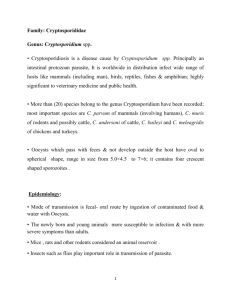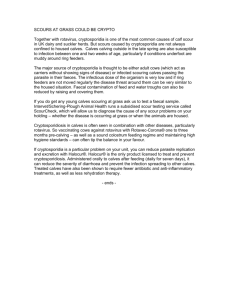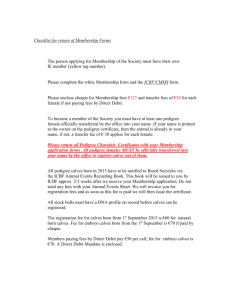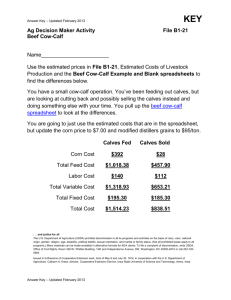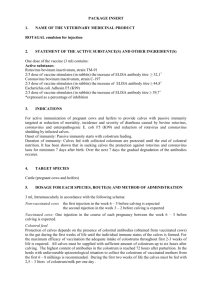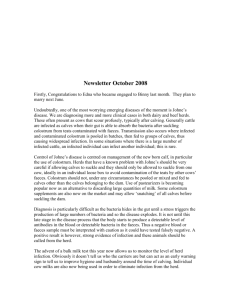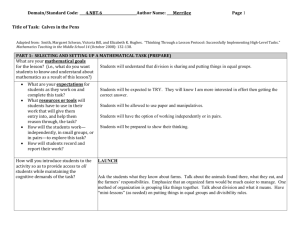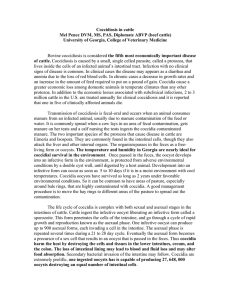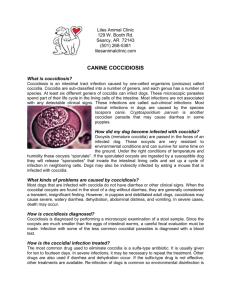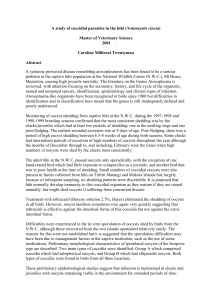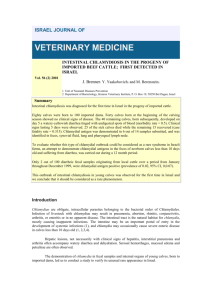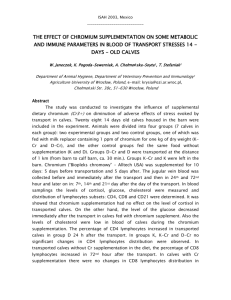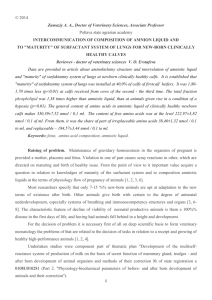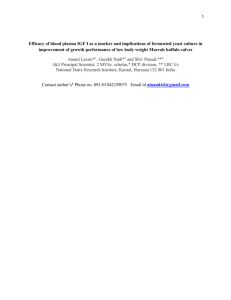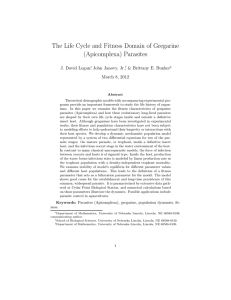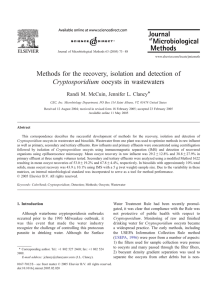BPA-2009-Protozoal_Diseases_In_Cattle
advertisement
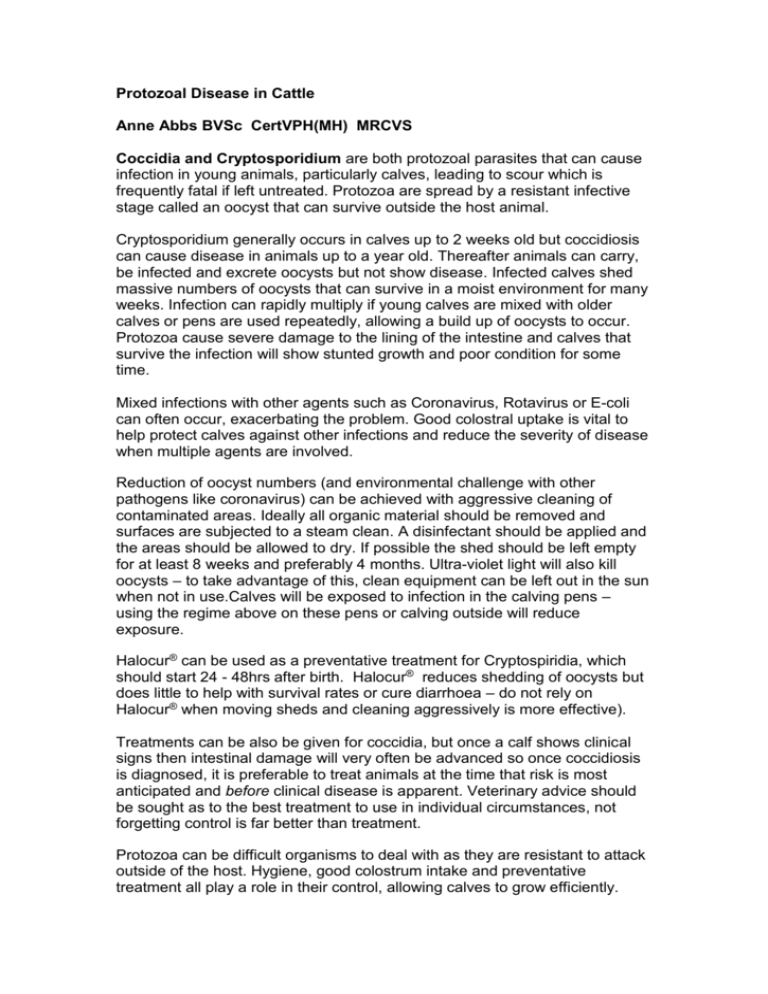
Protozoal Disease in Cattle Anne Abbs BVSc CertVPH(MH) MRCVS Coccidia and Cryptosporidium are both protozoal parasites that can cause infection in young animals, particularly calves, leading to scour which is frequently fatal if left untreated. Protozoa are spread by a resistant infective stage called an oocyst that can survive outside the host animal. Cryptosporidium generally occurs in calves up to 2 weeks old but coccidiosis can cause disease in animals up to a year old. Thereafter animals can carry, be infected and excrete oocysts but not show disease. Infected calves shed massive numbers of oocysts that can survive in a moist environment for many weeks. Infection can rapidly multiply if young calves are mixed with older calves or pens are used repeatedly, allowing a build up of oocysts to occur. Protozoa cause severe damage to the lining of the intestine and calves that survive the infection will show stunted growth and poor condition for some time. Mixed infections with other agents such as Coronavirus, Rotavirus or E-coli can often occur, exacerbating the problem. Good colostral uptake is vital to help protect calves against other infections and reduce the severity of disease when multiple agents are involved. Reduction of oocyst numbers (and environmental challenge with other pathogens like coronavirus) can be achieved with aggressive cleaning of contaminated areas. Ideally all organic material should be removed and surfaces are subjected to a steam clean. A disinfectant should be applied and the areas should be allowed to dry. If possible the shed should be left empty for at least 8 weeks and preferably 4 months. Ultra-violet light will also kill oocysts – to take advantage of this, clean equipment can be left out in the sun when not in use.Calves will be exposed to infection in the calving pens – using the regime above on these pens or calving outside will reduce exposure. Halocur® can be used as a preventative treatment for Cryptospiridia, which should start 24 - 48hrs after birth. Halocur® reduces shedding of oocysts but does little to help with survival rates or cure diarrhoea – do not rely on Halocur® when moving sheds and cleaning aggressively is more effective). Treatments can be also be given for coccidia, but once a calf shows clinical signs then intestinal damage will very often be advanced so once coccidiosis is diagnosed, it is preferable to treat animals at the time that risk is most anticipated and before clinical disease is apparent. Veterinary advice should be sought as to the best treatment to use in individual circumstances, not forgetting control is far better than treatment. Protozoa can be difficult organisms to deal with as they are resistant to attack outside of the host. Hygiene, good colostrum intake and preventative treatment all play a role in their control, allowing calves to grow efficiently.
